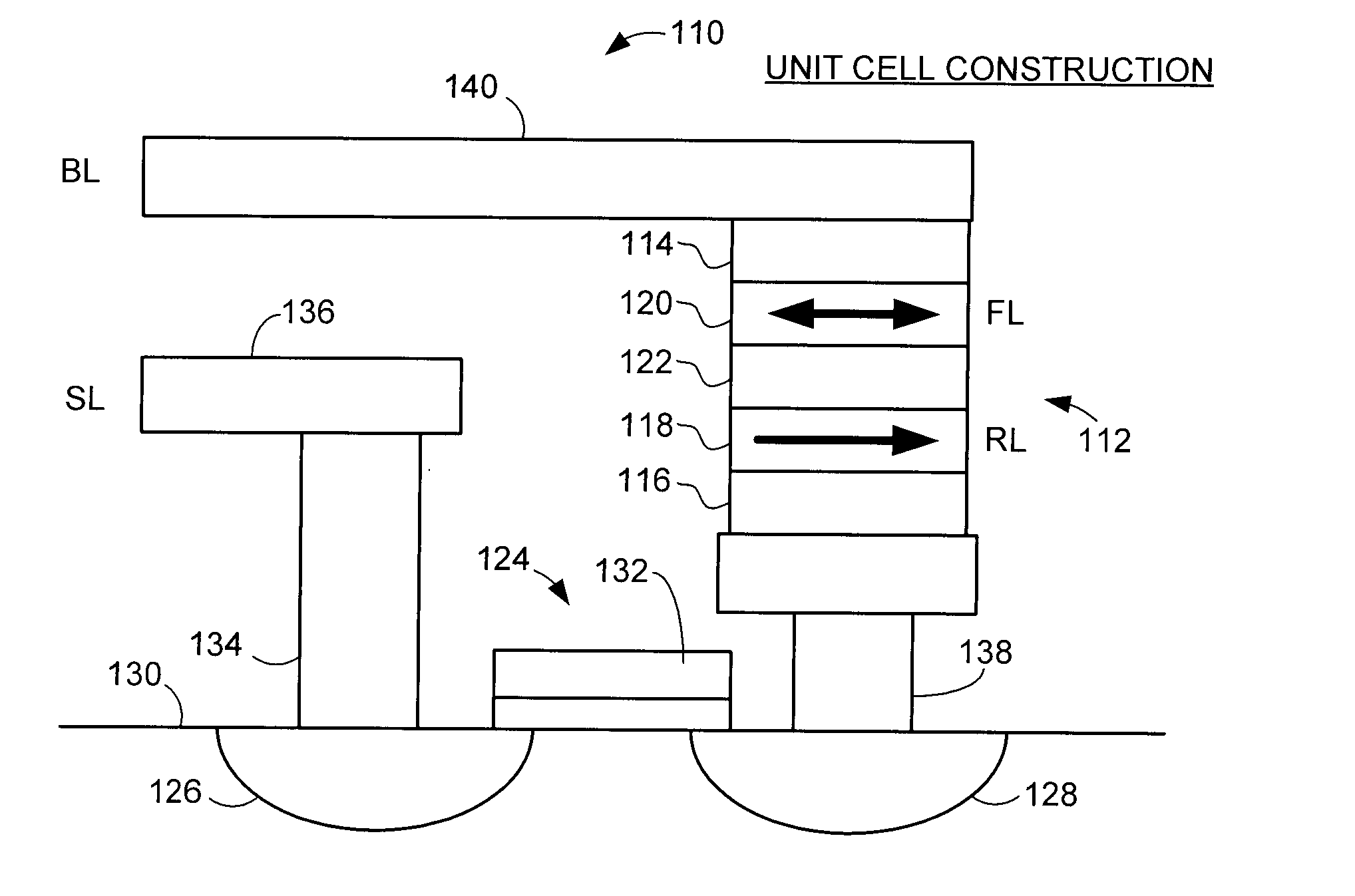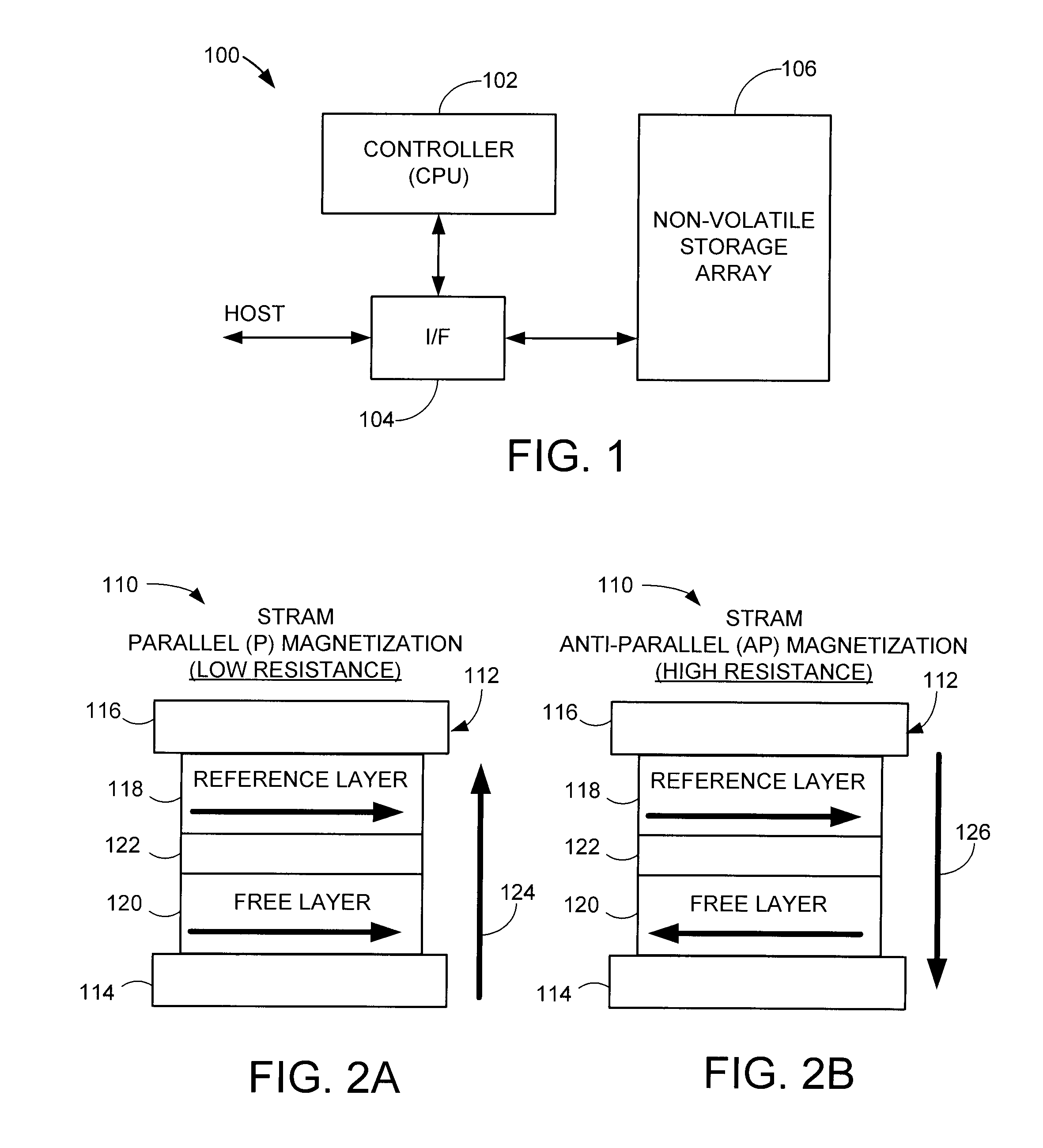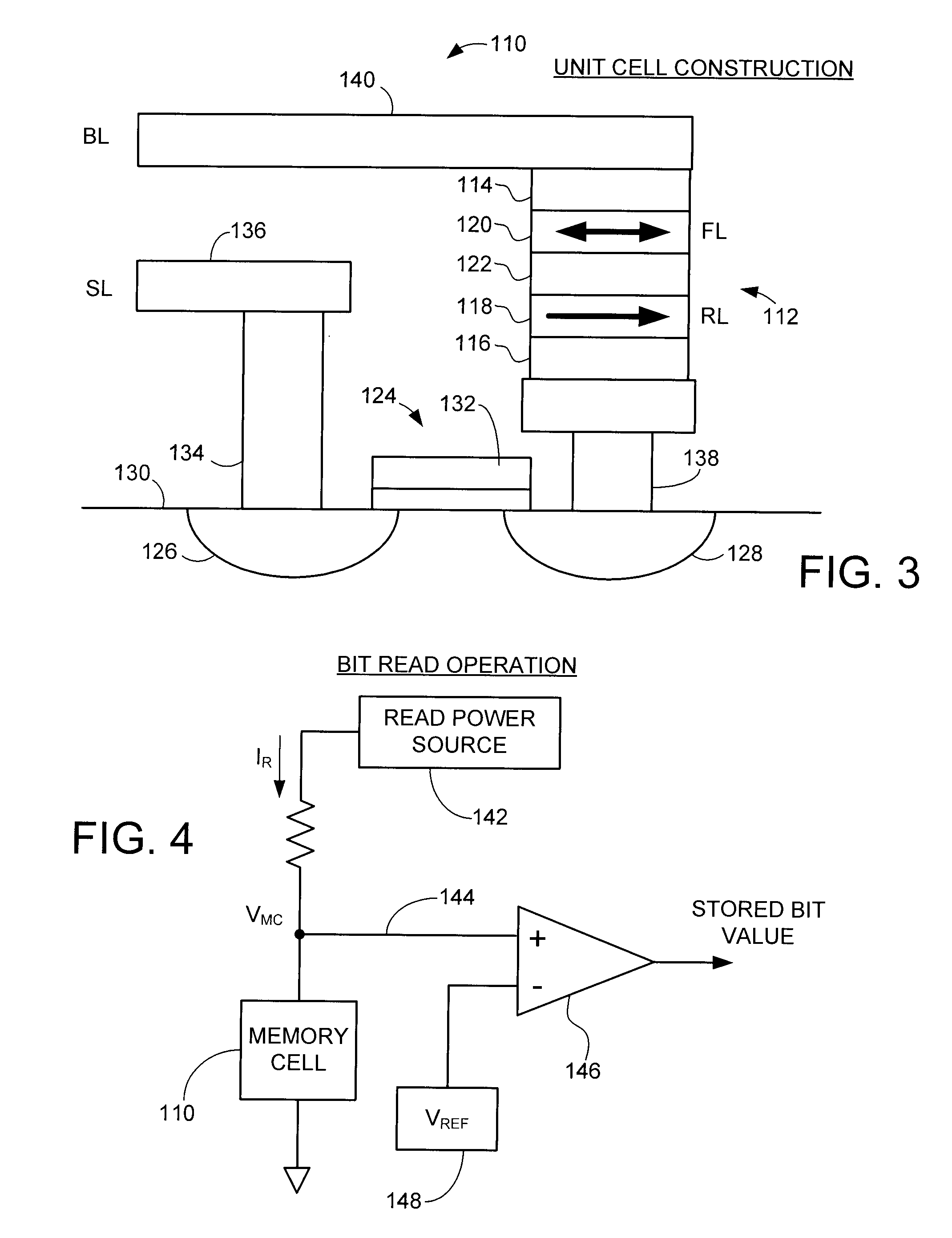Enhancing Read and Write Sense Margins in a Resistive Sense Element
a technology of resistive sense and read and write sense, which is applied in the direction of information storage, static storage, digital storage, etc., can solve the problems of adversely affecting data throughput rates during data reading and writing operations, and the difficulty of programming resistive sense elements in a first direction as compared to a second direction, so as to achieve the effect of enhancing read and write margins
- Summary
- Abstract
- Description
- Claims
- Application Information
AI Technical Summary
Benefits of technology
Problems solved by technology
Method used
Image
Examples
Embodiment Construction
[0022]FIG. 1 provides a functional block representation of a data storage device 100 to illustrate an exemplary environment in which various embodiments of the present invention can be advantageously practiced. The device 100 includes a top level controller 102, an interface (I / F) circuit 104 and a non-volatile data storage array 106. The I / F circuit 104 operates under the direction of the controller 102 to transfer user data between the array 106 and a host device (not shown). In some embodiments, the controller 102 is a programmable microcontroller, and the array 106 comprises an array of nonvolatile memory cells (unit cells).
[0023]An exemplary memory cell construction is set forth at 110 in FIGS. 2A-2B. The cell 110 utilizes a spin-torque transfer random access memory (STRAM) configuration, although such is not limiting. A resistive sense element (RSE) 112 characterized as a magnetic tunneling junction (MTJ) is formed between respective electrode layers 114, 116. The MTJ 112 incl...
PUM
 Login to View More
Login to View More Abstract
Description
Claims
Application Information
 Login to View More
Login to View More - R&D
- Intellectual Property
- Life Sciences
- Materials
- Tech Scout
- Unparalleled Data Quality
- Higher Quality Content
- 60% Fewer Hallucinations
Browse by: Latest US Patents, China's latest patents, Technical Efficacy Thesaurus, Application Domain, Technology Topic, Popular Technical Reports.
© 2025 PatSnap. All rights reserved.Legal|Privacy policy|Modern Slavery Act Transparency Statement|Sitemap|About US| Contact US: help@patsnap.com



